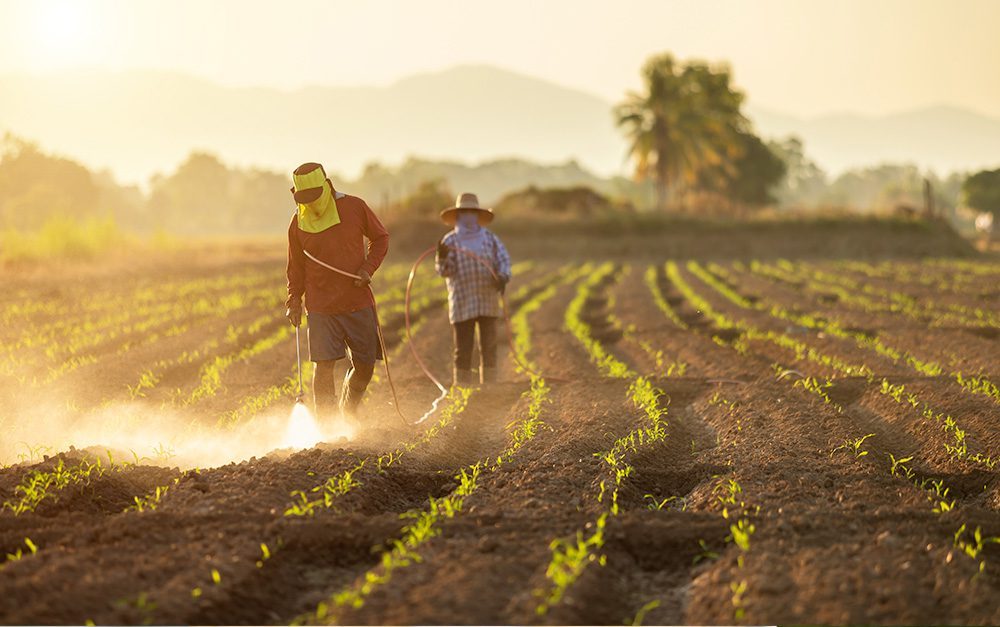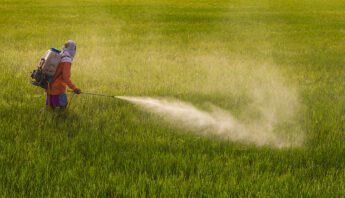Millions of people face health and livelihood harms from agricultural chemicals. Some live near pesticide factories, like the infamous plant in Bhopal, India. Many live near or work in fields where the chemicals are sprayed. And some see pesticides transported into their community on global wind and water currents.
PAN works with communities around the world to tackle the pervasive, often invisible, pesticide problem — and to press for healthier food and farming.
An invisible, global problem
Neither pesticides nor the problems they create respect national borders. Shining a light on the global harms of chemical-intensive agriculture has been a focus of PAN International’s work since the network’s inception more than 30 years ago.
PAN’s 2012 report Communities in Peril documents on-the-ground impacts of pesticide exposure across Asia, Africa and Latin America. Field researchers found that pesticide-linked health problems are common, adequate protective equipment is a rarity, and pesticide regulations are weak. Where safety rules do exist, they are largely unenforced.
Unfortunately, the scope of the problem is growing. Overall use of pesticides in the Global South has gone up significantly since 1985, particularly in Asia and Latin America.
The beginning and end of the pesticide lifecycle can also mean harmful exposures. Factories can sicken workers and nearby communities, pollute waterways and cause dangerous accidents such as Bhopal — one of the worst industrial accidents in history:
On December 3, 1984, more than 8,000 people died when a pesticide manufacturing plant exploded in the middle of the night. Twenty thousand more have died since as a result of this one event.
To reduce harmful exposures from pesticide production, use and disposal, PAN groups around the world are pressing for real investments in agroecology and rapid phaseouts of “Highly Hazardous Pesticides.”
Arctic communities contaminated
Endosulfan. Chlorpyrifos. Chlorothalonil. Not words one would associate with the crisp, cold air and water of the Arctic region.
Scientists have understood for decades that persistent pesticides can travel on wind and water currents to cold northern regions of the world. And we know that when these chemicals reach the Arctic, they wreak havoc on both the health of humans and the fragile environment.
PAN has partnered for many years with organizations like Alaska Community Action on Toxics who are working with Indigenous communities to stop pesticide contamination of Arctic traditional foods, the environment and people’s bodies.
Shawna Larson, a long time Indigenous environmental health activist and former member of PAN’s Board of Directors, explains:
These toxic chemicals trespass our bodies and enter our breast milk — our children and infants are getting them. We are seeing impacts of these through things like harms to respiratory health and increases in breast cancer.
Working through global fora like the Stockholm Convention, Indigenous communities of the Arctic continue to call for a stop to the practices that pollute their food and their bodies with health-harming pesticides.
For the children
As we documented in A Generation in Jeopardy, the science is very clear that pesticides just aren’t good for kids.
PAN Asia Pacific’s 2013 book, Poisoning Our Future: Children and Pesticides underscores that this is a global problem, affecting families around the world.
PAN groups in countries across the globe are now calling for urgent action on the “Terrible 20” — a subset of chemicals known to be most harmful to children from PAN International’s list of Highly Hazardous Pesticides.
In final chapter of PAN AP’s book, author Meriel Watts invokes Nelson Mandela:
There can be no keener revelation of a society’s soul than the way in which it treats its children.
Leveraging the power of a global network, PAN and our partners are rolling up our sleeves to meet this challenge, pressing national decisionmakers to take action on child-harming pesticides to protect current and future generations.







